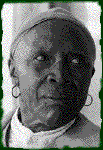
Chapter I.
INTRODUCTION:
SLAVERY AS MEMORY
AND HISTORY
For Teachers:
Introducing students to Remembering SlaveryBefore students begin reading and listening to the narratives, it is important that they have some kind of introduction to Remembering Slavery. In order to understand the narratives - and appreciate the particular perspective and insight they provide into slavery - students need background regarding and/or a historical overview of slavery and American history before, during, and after the Civil War. You can use the book's introduction (depending on the reading level of the students), or any other sources you choose (see the Resource section, Chapter IV). However, in addition to providing background, you should also try to help students consider some of the deeper, more complex issues in the introduction before students begin working with Remembering Slavery.
You can have older students (those at the high school level) read the book's introduction and use it as the basis for a classroom discussion. As noted, this introduction raises important question concerning the ways we approach all historical materials, including these interviews, as well as an overview of the historical development and changes in slavery as an institution. You can use the preview and follow-up questions and activities included in the Study Guide as a means of exploring ideas and issues raised by the introduction in the classroom. Younger students (elementary though middle school) can still engage with the issues raised by the introduction, without necessarily reading it. Many of the discussion questions and activities included in the Study Guide would be appropriate for students of all ages, and you can select certain ones to use to explore the more complicated issues about history and historical resources in the introduction. In general, as the introduction emphasizes, Remembering Slavery provides one of many perspectives on slavery. You are encouraged to use it in conjunction with a variety of other source materials. With any of these materials, discuss with students their specific strengths and weaknesses, assumptions and biases, so that students learn how to be more thoughtful, critical readers and listeners.
Previous Return Next